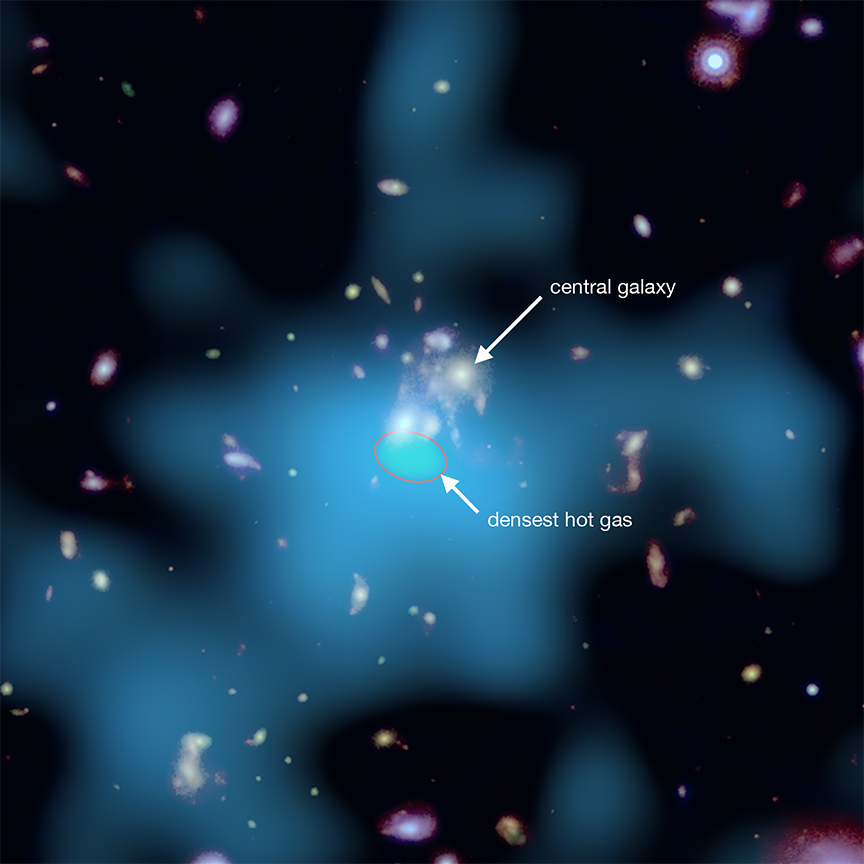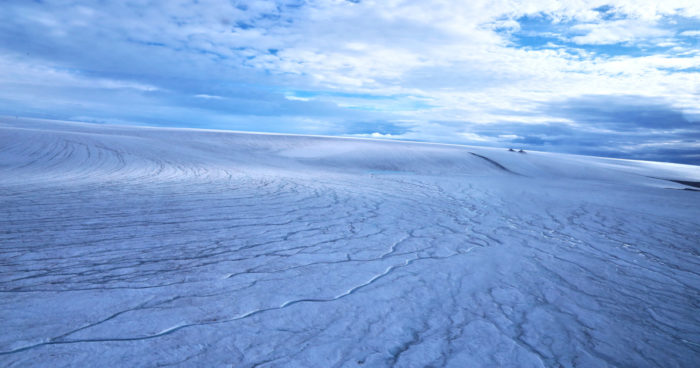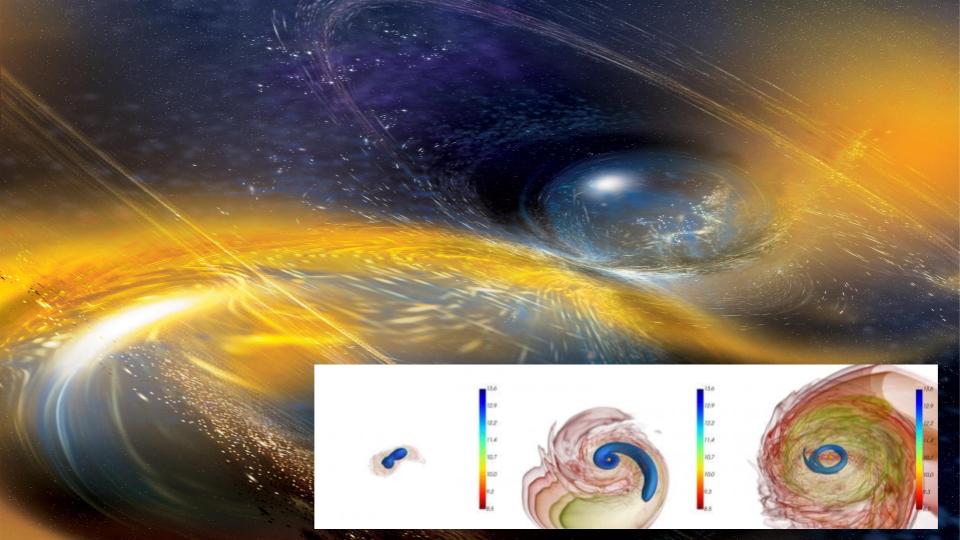Media
Transcript
In bringing you the news each day, we review often a dozen papers to pick out which stories are the most interesting to us that we hope will also be more interesting to you. Lots of factors go into picking stories: How novel is the science? How exciting are the results? Do we actually care about those results? Sometimes, I’ll be reading a journal article and realize I don’t actually care about carbon-rich supernovas studied in the X-ray. Those are the stories that don’t make it to this show.
Something else happens while picking stories. Somehow, day after day, themes seem to emerge that weave our stories together. This isn’t something that happens on purpose when picking stories. Like some game of “what do these all have in common?”, I’ll start reading the articles behind our chosen stories and discover some idea that ties it all together. The reason I bring this up is that yesterday, science all fell nicely into the bin of “these are pleasing observations that discover everything is as predicted” kinds of results.
But today? Today, the science is much more along the lines of new analyses pointing out all the ways the universe is not as it should be.
Take the galaxy cluster SpARCS1049. It is out there forming 900 some odd stars per year out of the gas and dust between galaxies. This is not normal. I actually studied galaxy clusters as a grad student, and normal massive clusters are filled with extremely hot gas that can’t form stars because the atoms are moving too fast to consider collapsing into stars. This gas is generally heated by jets from a central supermassive black hole that is active in the central galaxy, a cD galaxy that marks the cluster center. This supermassive black hole is active because it is feeding on material driven into its core through interactions with other systems, many of which it’s consuming.

In SpARCS1049, it doesn’t so much have a central cD galaxy as it has an off-center could-have-been-a-cD galaxy, and that galaxy isn’t active and isn’t heating all the gas in the intergalactic spaces in this cluster. Thus, that gas has a chance to cool, collapse, and form stars in a very not-normal way. It’s as if the universe said, let’s move this galaxy over and see what happens. The result was stars. Lots and lots of stars.
The team behind this work, which appears in the Astrophysical Journal Letters under the first author, Julie Hlavacek-Larrondo, theorizes that this kind of a system may have been common in the early universe when clusters were still settling into their final shapes and may have been responsible for forming a lot of the universe’s early stars.
This galaxy cluster is not the only weird thing going on in today’s news.
Looking closer to home, we have a story of water on Mars appearing in Nature Geoscience under first author Anna Grau Galofre. For those of you who have been following the plight of the study of waters on Mars, you know that over the past couple of decades we’ve gone from thinking that all the amazing features we see on Mars were probably formed by aeolian processes – sand blowing in the wind – to thinking that they happened via fluvial processes, or liquid flowing across the surface. For there to be liquid flowing on the surface of Mars, we had to imagine a history in which Mars was, once upon a time, warm and wet.

You can get liquid water in lots of different ways. We have liquid water on Earth in lots of different places. The science of comparative geology allows us to look at what’s going on here and match it to what’s going on there. Researchers here on Earth looking around our planet, trying to find riverbeds and valleys that looked like those that we see on Mars, found them. They found them on Devon Island in the Arctic Sea around Canada, and these riverbeds weren’t formed by water flowing across the surface of the Earth under open blue skies. They were formed by rivers rushing underneath the pressure of massive glaciers.
This changes our thinking on Mars, reminding us that Mars can have massive amounts of ice on its surface. We see this in its polar caps. This tells us that maybe a lot of those rivers and valleys we see carved on Mars weren’t carved by rivers we’d recognize but were instead carved by rivers under glaciers such as we rarely get to see. This kind of comparative geology is sadly made possible thanks to the recession of glaciers on our own planet that allow us to see what the geology underneath them looks like.
So maybe Mars wasn’t as warm in the past as we thought for as long as we were starting to hope. We don’t know. This is one of those things about Mars where we just have to say we don’t know. We’re still trying to figure it out, and every time we look at the observations, we learn something new. It turns out Mars is far more complicated and interesting than we had previously given it credit for.
Continuing our thread of things that aren’t quite as they should be, we have a story of what happens when two neutron stars merge in a way that we’re just now starting to observe, thanks to LIGO and the other gravitational wave detectors around our planet.
In a new paper appearing in the Monthly Notices of the Royal Astronomical Society by Sebastiano Bernuzzi, researchers have begun modeling what happens when two very different-massed neutron stars collide.

Neutron stars have a very small range of masses they can exist at. Anything that is a dead star – no longer undergoing nuclear reactions – that is under about 1.2 solar masses is going to form a white dwarf star that is supported by electron degeneracy pressure. Once you get over that 1.2, those electrons no longer exert enough pressure, and the object collapses down, protons and electrons combining to form neutrons in a massive blast of energy.
If you take that neutron star and you keep piling mass on until it’s somewhere around 2.5 or three solar masses, the neutron degeneracy pressure that is supporting that dead star can’t do it anymore, and it collapses further down to form a black hole. And we don’t know what black holes are.
When two neutron stars merge, which is a thing that happens and produces a whole lot of gold, it’s thought that, in general, they form a black hole exceeding that three solar mass limit. When this occurs, no light escapes; the black hole just consumes everything except for the gravitational waves, which is what we’re detecting here on Earth. You can have a 1.3 solar mass neutron star and a twice-as-large 2.5-2.6 (we’re not really sure) solar mass neutron star.
In new models, looking at what happens when these two objects come together, it appears that the more massive neutron star will shred the smaller neutron star, causing light to be released, marking what is happening with dramatic sky events that maybe someday we’ll get to see. Showing us sometimes, in the process of forming a black hole, if things are just different enough, you can get light.
In all three of these stories, we see the situation of things being slightly sideways of what we expected: an off-center galaxy, a river under a glacier instead of on the surface, neutron stars merging that are very different masses. That change changes everything and forces us to think about the universe a little bit more broadly, and that is kind of awesome.
NOTE: As we move into the fall during these weird pandemic times, I know a lot of people are trying to figure out how to get their kids learning from home with just the Internet. I’d encourage all of you to remind parents we’re here. We’re kid-friendly with the Daily Space. We offer a whole lot of news, a whole lot of science. I hope that we break it down in a way that high school students and advanced middle schoolers can understand. So share us out and help some people learn.
Learn More
Black Hole Fails to Do Its Job
- Chandra X-ray Observatory press release
- “Evidence of Runaway Gas Cooling in the Absence of Supermassive Black Hole Feedback at the Epoch of Cluster Formation,” J. Hlavacek-Larrondo et al., 2020, Astrophysical Journal Letters (Preprint on arxiv.org)
Early Mars Was Covered in Ice Sheets, Not Flowing Rivers
- Western University press release
- Arizona State University press release
- “Valley Formation on Early Mars by Subglacial and Fluvial Erosion,” Anna Grau Galofre, A. Mark Jellinek & Gordon R. Osinski, 2020 Aug. 3, Nature Geoscience
Unequal Neutron-Star Mergers Create Unique “Bang” in Simulations
- Penn State Eberly College of Science press release
- “Accretion-Induced Prompt Black Hole Formation in Asymmetric Neutron Star Mergers, Dynamical Ejecta and Kilonova Signals,” Sebastiano Bernuzzi et al., 2020, Monthly Notices of the Royal Astronomical Society (Preprint on arxiv.org)
Credits
Written by Pamela Gay
Hosted by Pamela Gay
Audio and Video Editing by Ally Pelphrey
Content Editing by Beth Johnson
Intro and Outro music by Kevin MacLeod, https://incompetech.com/music/


 We record most shows live, on Twitch. Follow us today to get alerts when we go live.
We record most shows live, on Twitch. Follow us today to get alerts when we go live.